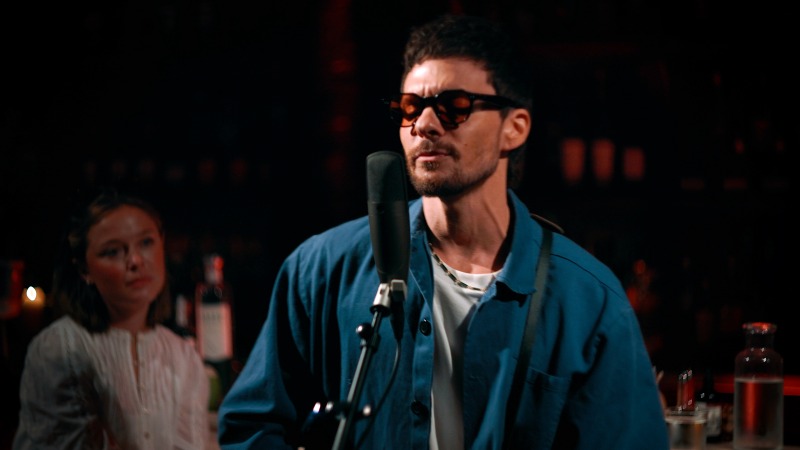The Jim Gaffigan Show: Being the Boss
Jim Gaffigan and I are sitting in the New York Transit Museum, next to the dummy subway car where I’ve just watched him spend about twenty minutes repeatedly running a series of lines concerning a steak dinner. His wife is standing nearby—next to Ashley Williams, the actress who is portraying her. The sitcom’s cameramen had been tasked with shaking their cameras slightly in order to simulate the way that moving subway cars list back and forth, because the crew had gotten guff from the museum’s management for manually jostling the fake train. The finished product looks pretty convincing, however, and atop this impressive pile of TV artifice Gaffigan and I are talking about authenticity.
“I love the idea of the situation truly being funny,” says Gaffigan, whose calm, disarming demeanor is so out of place amongst the insanity of a deadline-driven television shoot in a public museum that it’s almost confusing. “With a single camera show you don’t have to be beholden to a rhythm of a four-camera show.”
There had been two cameras shooting the train scene, with the intention of being able to cut back and forth between them in the traditional multi-camera sitcom style. Gaffigan is pulling for using the footage from just one of them, however, in order to better preserve the rhythm of the dialogue. “With a single camera show, authenticity and realness are part of the currency where you can earn the jokes,” he says.
Earning jokes this way, via a cocktail of mise-en-scène and the natural rhythm of conversation, is a new frontier for Gaffigan, who has spent most of the last decade as one of the most popular standup comedians in America. “I’ve been doing stand up for over 150 years,” he says. “I’ve also been lucky enough to be cast in a couple shows. I’ve learned what kind of show I would want to do and what I kind of show I wouldn’t want to do.”
The Jim Gaffigan Show, which Jim developed alongside his wife and writing partner Jeannie, deals with their lives as writer/performers, New Yorkers and parents of five children in a Lower Manhattan apartment with only two bedrooms. Given that they’re opting to put a simulacrum of their lives onscreen, a tight grip on the show’s tone is understandably paramount for the Gaffigans. So much so, in fact, that the show’s influences lie primarily outside the comedic sphere. “We’re in this golden age of dramas,” he says, “where they know these worlds and we [as viewers] can really escape because the detailing in Mad Men is so thorough.”
To hear Gaffigan tell it, TV comedies are caught between a rock and a hard place: The stilted, unrealistic rhythms of multi-camera sitcoms, and the easy joke formulas and propped-up atmospherics of single-camera sitcoms. Says Gaffigan: “With four cameras, it’s too caught up in cadence. There are single camera comedies that are funny, but there’s not enough reality. Then there are single camera comedies that are based in reality, but they’re not really comedies [and] they get credit for being a comedy. I feel like there’s room for something that has all those things.”
-

-

-

-

-

-

-

-

-

-

-

-

-

-

-

-

-

-

-

-

-

-

-

-

-

-

-

-

-

-

-

-

-

-

-

-

-

-

-

-








































